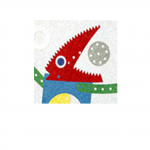Bardahl: a successful story
BARDAHL covers a total of 86 countries, in 8 of which it is active with industrial blending and packaging plants.
A great heritage of the BARDAHL tradition is the constant research on new formulations that have given life to products that have made the history of the sector. BARDAHL, all over the world, is synonymous of avant-garde for the very high performances that its products offer to the sophisticated engines of today. The chemical formulations of BARDAHL products have always been exclusive, the only ones able to differentiate themselves for superior quality and absolute reliability.
The Formula Polar Plus, was discovered by Ole Bardahl in 1939 and founded the Bardahl Manufacturing Corporation and developed the Formula Polar Plus which consists of electrically charged molecules that can chemically fix to the metal as micro-calamite. These molecules reduce friction between two metal surfaces to such an extent as to guarantee correct lubrication even in the absence of lubricating oil.
Needs:
Modernisation of storage and handling of goods in warehouses.
The company covers 86 countries globally, and a group of specialized and qualified dealers for the products. The company’s need was to create an automated and controlled system for handling incoming and outgoing emissions at all times, in order to provide a complete service and continue to guarantee the quality of Bardahl branded products.
The R-FId project
Automatic collection of information detectable by RFID technologies, ie by reading optical codes with additional information to the product code. The result is a better traceability of products both at Bardahl Italy and at the customers.
Automation and control of loading procedures of purchase and production, handling locations, picking and packing list shipping. Division of the warehouse in location for the optimization of movements, traceability of production batches.


